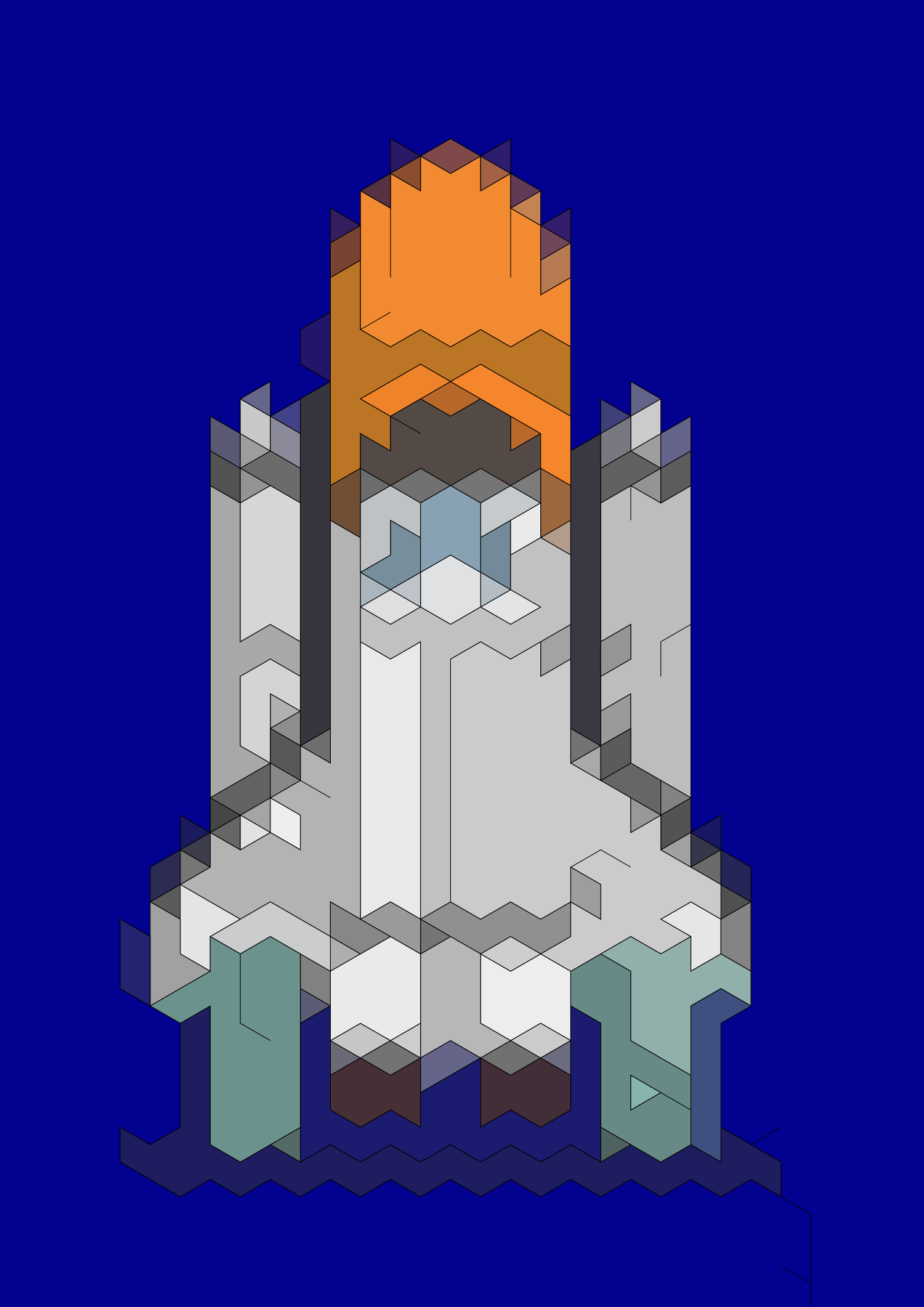I have recently started adding a new type of effect to the shapes that I use to build up my designs: rotations. A first try with basic triangles resulted in an interesting pattern that looks a bit Moorish and reveals hexagon shapes in the created empty spaces. The rotations become more clear when applying them to a different degree in the design. Of course, adding different types of randomization makes it even more intriguing!
Tile merging
So far, I have used images as the color basis for designs that are build up from predefined polygon tile shapes. Recently I have started to re-create simplified versions of the original images. By merging neighbouring tiles that approximately have the same color, more complicated and irregular polygon tiles are made. This brings the design closer to the original image, and at the same time randomizes the tile shapes.
The degree of randomization can be controlled by playing around with the size and shape of the original tiles, and with the maximum color difference allowed for tiles to merge. The current 'incomplete' implementation of the tile merging even creates an additional random effect, shown by irregular lines present in some of the polygon tiles. In a way, this approach is a crude attempt to vectorize a color image.
Christmas card
For this year's Christmas card I designed a pattern based on Christmas trees. By randomizing the corner points and the color shades of the trees, each single tree becomes unique! After experimenting a bit with the removal of some selected trees to create a message, I decided to go for a collection of a few larger trees, to make their unique character easier to see.
Circlikes
For our wedding, my fiancée and me were looking for a colorful and festive design theme to use in our invitations and website. After some research we were especially charmed by a 'confetti' design, consisting of many circle-like (or circlike) dots in a few selected colors. One of the interesting properties of these confetti is that their shape is approximately round, while they all have their own unique irregularities. To construct these shapes, I used the mathematical formula for quadratic Bézier curves. By displacing the circle points in between their control points, the overall circular shape becomes deformed while keeping the edge smooth.
Image patterns for Art Route
In response to an invitation from my employer to submit work for an Art Route throughout the offices, I created some patterns with colors based on 'high-tech' images. The design that I finally submitted uses a pattern that is based on the shapes of the 'Parksteen' tiles found around most of the offices, designed by the company Aquaflow®. My design links the futuristic steps of space travel and colonization, with this down-to-earth stepping stone pattern.











